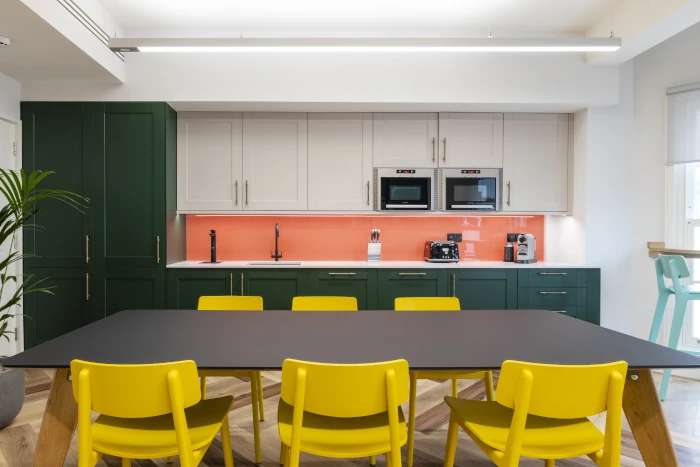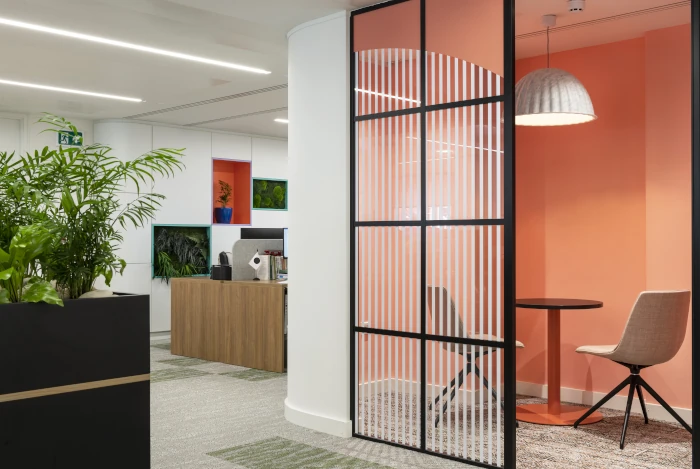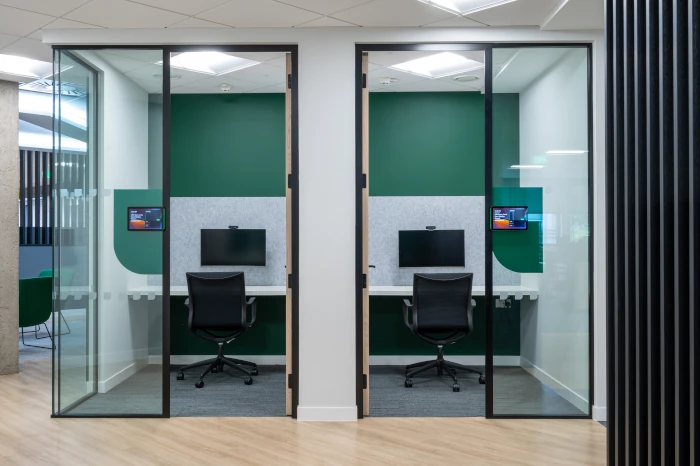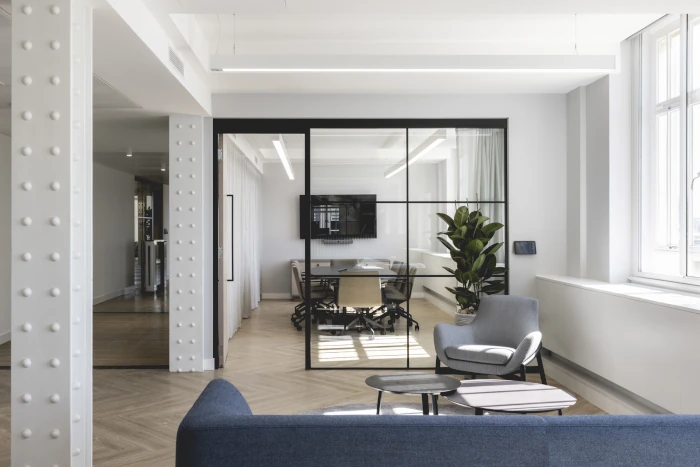The Role of Colour in Office and Workplace Design
24/07/24< Back to news index

In the realm of office and workplace design, every element plays a pivotal role in shaping the environment. From furniture to lighting, each component contributes to the overall ambiance and functionality of the space. Among these, colour holds a distinct significance, influencing not only aesthetics but also employee productivity, creativity, and well-being.
The selection of colours in office design is far from arbitrary; it is a strategic decision rooted in psychology and behavioural science. Different colours evoke distinct emotional and psychological responses, which can profoundly impact individuals' moods, energy levels, and cognitive functions.

One of the most commonly used colours in office spaces is blue. Known for its calming and serene qualities, blue instils a sense of tranquillity and stability, making it ideal for environments where focus and concentration are crucial. Moreover, blue is often associated with professionalism and trustworthiness, making it a popular choice for corporate settings.
On the other hand, vibrant hues like yellow and orange are renowned for their ability to promote creativity and optimism. These warm tones can inject energy into the workspace, fostering a dynamic and stimulating atmosphere. Incorporating touches of yellow or orange in collaborative areas or brainstorming rooms can encourage idea generation and facilitate communication among team members.

Green, reminiscent of nature, has been linked to enhanced concentration and mental clarity. Introducing green elements, such as plants or accent walls, can evoke feelings of rejuvenation and vitality, promoting a sense of well-being among employees. Additionally, green has been shown to reduce eye strain, making it an excellent choice for spaces where employees spend extended periods in front of screens.
While these colours have their respective benefits, it is crucial to strike a balance and avoid overwhelming the space with intense hues. Neutral colours like grey, beige, and white serve as a backdrop, allowing other elements to stand out while promoting a sense of spaciousness and sophistication. Moreover, incorporating natural light into the design can amplify the effects of colour, creating a harmonious and inviting environment.

In addition to influencing mood and productivity, colour can also play a role in brand identity and culture within the workplace. By integrating company colours into the design scheme, organizations can reinforce their brand image and instil a sense of belonging among employees. Furthermore, incorporating cultural elements or regional preferences in colour choices can foster inclusivity and diversity, reflecting the values of the organization.
The strategic use of colour in office and workplace design is a powerful tool for enhancing productivity, creativity, and well-being. By understanding the psychological effects of different colours, designers can create environments that not only look visually appealing but also promote a positive and conducive atmosphere for work. Whether it's through calming blues, energizing yellows, or refreshing greens, the thoughtful application of colour can transform the workplace into a space where employees thrive.